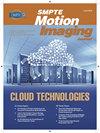由多个nmos兼容系统组成的节目制作系统
Q3 Engineering
引用次数: 0
摘要
随着用于传输信号的SMPTE ST 2110套件和用于控制系统的高级媒体工作流程协会网络媒体开放规范(AMWA NMOS)等标准的发展,广播公司的基础设施正朝着用基于互联网协议(IP)的节目制作系统取代的方向发展。这场运动通常从较小的组成部分开始,如外部广播(OB)面包车和一些工作室。由于IP网络的优点是连通性,因此优选将这些独立引入的组件中的每一个连接并作为一个可以在许多节目制作之间共享的大型节目制作系统来操作。符合NMOS的程序制作系统具有具有关于制作系统中的所有设备的信息的注册和发现系统(RDS)。挑战在于在连接多个NMOS兼容系统时如何配置和操作RDS。为了在多个程序产品之间共享系统中的资源,还必须保护运行中的设备免受意外操作的影响。为了实现这一点,需要一个管理每台设备运行时间表的功能和一个根据时间表发布授权的机制。NMOS IS-10规范定义了一种授权方法,但尚未对基于资源管理员管理的时间表发布授权进行研究。在本演示中,我们提出了一种管理多个RDS并根据操作时间表发布授权的方法,以构建由多个NMOS兼容系统组成的大型程序生产系统。已经就位的设备可以与所提出的方法一起使用,因为用于注册和授权的应用程序编程接口(API)与标准NMOS兼容系统的那些相同。本文章由计算机程序翻译,如有差异,请以英文原文为准。
Program-Production System Consisting of Multiple NMOS-Compliant Systems
With the development of standards such as the SMPTE ST 2110 suite for transmitting signals and Advanced Media Workflow Association Networked Media Open Specifications (AMWA NMOS) for controlling systems, there is a move toward replacing broadcasters’ infrastructure with Internet Protocol (IP)-based program-production systems. This movement often starts with smaller components such as outside broadcasting (OB) vans and a few studios. Since the advantage of an IP network is connectivity, it is preferable for each of these independently introduced components to be connected and operated as one large program production system that can be shared among many program productions. An NMOS-compliant program-production system has a registration and discovery system (RDS) with information on all equipment in the production system. The challenge is how to configure and operate RDSs when connecting multiple NMOS-compliant systems. To share resources in the system among multiple program productions, it is also imperative that the equipment in operation be protected from accidental operations. To achieve this, a function to manage the operational schedule of each piece of equipment and a mechanism to issue authorizations on the basis of the schedules are needed. The NMOS IS-10 specification defines an authorization method, but there has been no study on issuing authorization on the basis of a schedule managed by a resource administrator. In this presentation, we propose a method for managing multiple RDSs and issuing authorizations on the basis of operational schedules to construct a large program-production system consisting of multiple NMOS-compliant systems. The equipment already in place can be used with the proposed method because the application programming interfaces (APIs) for registration and authorization are the same as those of a standard NMOS-compliant system.
求助全文
通过发布文献求助,成功后即可免费获取论文全文。
去求助
来源期刊

SMPTE Motion Imaging Journal
工程技术-成像科学与照相技术
CiteScore
0.60
自引率
0.00%
发文量
0
审稿时长
>12 weeks
期刊介绍:
The SMPTE Motion Imaging Journal is the key publication of the Society, consistently ranked by our members as the most valuable benefit of their SMPTE membership. Each issue of the Journal explores a theme in great depth, with peer-reviewed technical articles from leading academics, researchers and engineers working at the top companies worldwide.
You''ll expand your knowledge on topics like image processing, display technologies, audio, compression, standards, digital cinema, distribution and machine learning and much more. For additional coverage of each month''s topic, the Journal features more exclusive articles online.
 求助内容:
求助内容: 应助结果提醒方式:
应助结果提醒方式:


